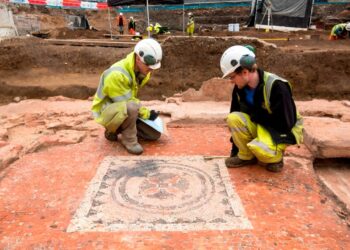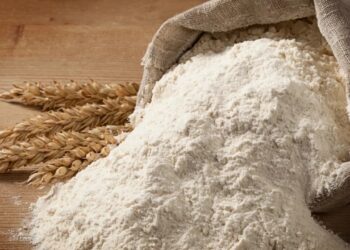When do heart cells become zombies and no longer useful? Being able to find out would help in transplants and researchers develop a test to detect them
A new study, funded in part by the British Heart Foundation (BHF), has led to a promising discovery that could increase the number of hearts available for transplantation. Currently, hearts come from more donors elderly people they are not accepted for transplants due to concerns about their condition. However, researchers at Newcastle University are developing a test innovative way to identify dangerous cells “zombie” present in the hearts of potential older donors, but not only. Zombie cells are cells that malfunction and can negatively affect surrounding tissue. Zombie cells are senescent cells, meaning cells that have stopped dividing and performing their normal functions. This test could help doctors quickly assess whether a heart is still suitable for transplant.
Chronological age is not always a reliable indicator
It’s important to understand that chronological age is not always an accurate indicator of heart health. Our hearts age in different ways, and therefore, age alone shouldn’t rule out a heart as an option for transplant. Researchers have noticed that people with heart disease, regardless of age, have a higher number of zombie cells, and have identified specific markers in the blood that can reveal their presence. The goal of the research is to identify a ‘signature’ of ‘zombie’ cells in the blood of potential older donors. This signature could indicate if the heart biologically he is still young and healthy, despite his chronological age. Researchers are currently studying one particular protein, called GDF15, which is released in higher quantities by “zombie” cells than by healthy cells. According to the scientists, it could be an important indicator for assessing the quality of the donor heart. Dr Gavin Richardson, head of research, is optimistic about the results so far. The ultimate goal is to change the current approach, in which most hearts from elderly donors are not used for transplants. The hope is to demonstrate that some of these hearts are suitable for transplants, offering vital hope to people waiting for a new heart.
How is the suitability of a heart for transplant generally assessed?
The assessment of heart suitability for transplantation depends on multiple factors related to the conditions of the recipient and the characteristics of the donor. Any organ removed for the purpose of transplantation must be of acceptable quality and must not expose the recipient to unacceptable risks.
Risk levels
Generally, the general criteria for the assessment of donor suitability are defined by the Guidelines for donor assessment. There are three levels of risk: unacceptable risk (absolute exclusion criteria, no organs may be used for transplant purposes), increased but acceptable risk (although the evaluation process highlights the presence of pathogens or transmissible diseases, the use of is justified by the particular clinical condition of the recipient(s), or by the clinical urgency of the recipient) and calculated risk (cases in which the presence of a specific pathogen or serological status of the donor is compatible with transplantation in recipients presenting the same agent or serological status).
The fitness of the heart

To evaluate, specifically, the suitability of a Heart for the transplant, several criteria are used: the age of the donor, the cause of death, the presence of pre-existing diseases, cardiac efficiency, organ function and compatibility between the donor and the recipient. In addition to these factors, extensive tests such as blood tests, electrocardiograms, echocardiograms, and coronary angiography (a procedure that uses a contrast dye, usually containing iodine, and X-ray images to detect blockages) are done in the coronary arteries of the heart) to evaluate the health of the donor heart. Another important aspect is the ischemia time, i.e. the time elapsed between the collection of the heart from the donor and its transplantation into the recipient. This period should be as short as possible to preserve its quality. Ongoing research, such as that from Newcastle University, is seeking to develop new tests and approaches to more accurately assess the suitability of hearts for transplantation.
The signature of zombie cells: the suitable donor can be identified with a blood test

The researchers conducted a study using blood samples from 774 people older than 85 years. They found that people with heart disease had higher levels of the GDF15 protein in their blood than those without heart disease, indicating the presence of more ‘zombie’ cells in their hearts. The rising levels of GDF15 it was similar to that of another protein used to diagnose heart failure, suggesting the researchers could identify cells associated with senescence. Furthermore, by analyzing theRNA present in the cells of eight donor hearts, identified a strong link between a “zombie” cell marker called p21 and another marker of heart and circulatory disease. These two markers could constitute the “zombie” cell signaturewhich could be detected through tissue or blood tests. Currently, researchers are using blood and tissue samples from biobanks to look for this signature and determine if it correlates with better transplant outcomes. The biobank Quality in Organ Donation and NHS Blood and Transplant are involved in this important research. Professor James Leiper, Associate Medical Director of the British Heart Foundation, commented: “Heart failure is an epidemic, with nearly a million people in the UK affected. For a small but significant number of these people, the only possible cure is a heart transplant. Therefore, it is extremely encouraging to know that Dr. Richardson and his team are making significant efforts to help meet this growing demand for hearts available for transplant.”
Increase the number of suitable hearts
Derek Manas, Medical Director for Transplantation at NHS Blood and Transplant, said: “With the need for organ donation and transplantation to occur rapidly, it is worth exploring ways in which new technologies and tests can help us assess the suitability of organs for transplantation. For many reasons, donor hearts of any age are often not suitable for transplantation, so we are keen to support any research that may help us increase the number of eligible hearts to transplant, save more lives and improve outcomes for those who are waiting“.






